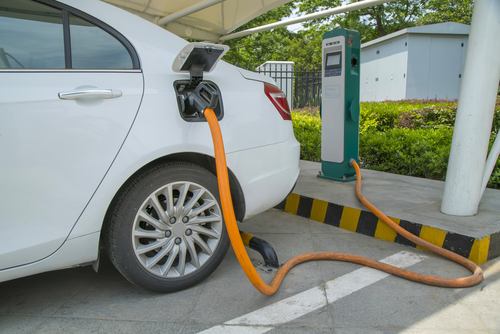Southern California Edison urges CPUC to approve higher unit price for EV charging program

Southern California Edison (SCE) has urged the California Public Utilities Commission (CPUC) to increase the revenue it can recover for its plan to expand its charging network for electric vehicles (EV) from the $15,000 per unit proposed by the CPUC to $16,800 per unit.
Edison this month filed formal comments on a proposed decision by the California Public Utilities Commission that will give the green light to the next phase of SCE’s 2016 Charge Ready program. The Charge Ready 2 project will enlist private companies and residential units to have on-site charging stations installed to both encourage and facilitate an anticipated surge in the number of EVs on California’s roads.
The CPUC’s proposed decision on Charge Ready 2, the next phase in the utility’s Charge Ready pilot program, was issued July 27. The commission rejected SCE’s initial proposal of $20,000 per charging “port” and proposed a rate of $15,000 per port. The proposal, however, was also lower than the rate suggested by consumer groups that had also filed briefs and comments on the matter; it was instead based on the average installation cost of $13,731 per port during the first phase of the program.
The August 24 response from SCE argued that the installation costs were being driven higher in large part by the effort to expand the number of EV chargers at apartment buildings and condominiums, also known as multi-unit dwellings (MUDs).
SCE proposed placing 30 percent of the chargers at MUDs with an emphasis on sites in so-called disadvantaged communities (DACs). The CPUC proposed increasing the target to 40 percent; however, SCE said that idea carried higher costs and likely lower returns from customers. Under the program, installations in DAC sites are subject to a 100-percent rebate from SCE while MUD projects earn a 50-percent rebate. All other projects receive a 25-percent rebate.
“SCE found that the $15,000 average cost per port is too low to support the inclusion of smaller sites in the program – even with a 30 percent MUD target,” SCE said in its response. “SCE determined that applying 30-percent MUD and 50-percent DAC targets … requires increasing the average cost per port to approximately $16,800.”
The utility also discounted the idea of scale bringing down costs, particularly in projects with multiple ports, because each port requires new wiring, known as stubs, plus there are other construction costs.
Moreover, smaller MUDs might not have a sufficient number of tenants who drive EVs to support multiple charging ports, which would make it more difficult for SCE to recover costs through electricity sales.
A final decision from the CPUC was expected in the fourth quarter of 2020.
